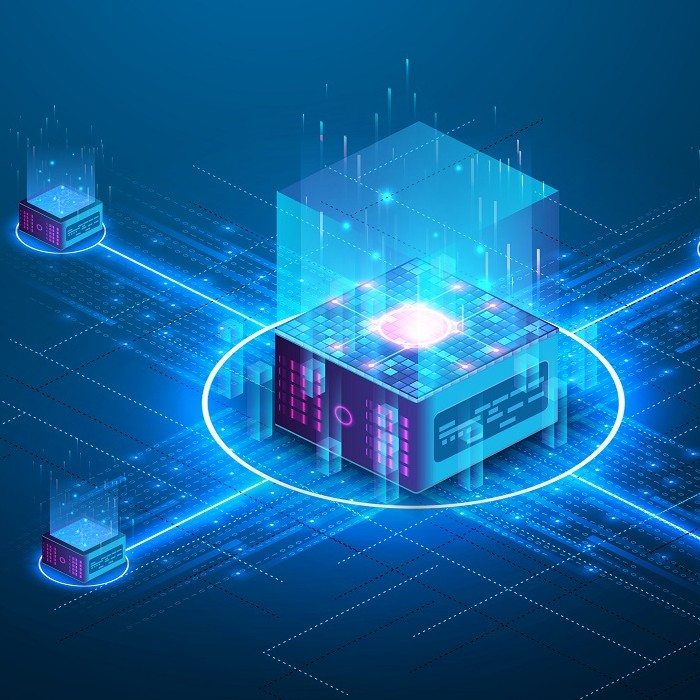It takes a particular sort of person to wear the title of “chief futurist.”
Mike Bechtel, who holds the position at professional services powerhouse Deloitte Consulting LLP, sometimes compares technologies to Star Wars characters to make a point, and he signs off on official reports with the whimsical signature “!mb.”
Occasionally, during the course of an interview, he’ll change up his voice and adopt the persona of a well-intentioned manager who is misreading the moment. When he recently tweeted that he was “irrationally exuberant” about the coming year, he was referring not to any specific tech trend, but rather to the upcoming tour of the ’90s pop-punk band Blink-182.
“When you throw out a word like ‘futurist,’ people are like: ‘Uh oh, snake oil,’” Bechtel said.
“But we see it as our job to inoculate our clients against snake oil. The leading characteristic of snake oil is that it tends to show up as a shiny hammer in search of nails. When people lead with the technology like that, rather than focus on solving problems, we tend to see overbuilding and misapplication.”
Accordingly, Deloitte’s “Tech Trends 2023” report (authored by Bechtel and his team) focuses less on entirely new technologies, and more on how organizations will apply once-futuristic solutions to solve their problems in practical ways. Maturing existing technologies, as opposed to innovation, is an IT metatrend for 2023.
Bechtel and Deloitte see these six IT trends defining the year ahead.
1. VR Becomes a Valuable Enterprise Tool
In 2022, critics had their fun dunking on the as-yet sparsely populated metaverse. But Bechtel sees businesses finding valuable uses for virtual reality (VR) and augmented reality (AR) in the coming year – as long as they approach these technologies strategically. “The advice that we’ve been giving to our clients is to consider how they use the classical internet today,” Bechtel said.
He points out that, for many organizations (including Deloitte), the internet essentially serves as a “digital billboard” to advertise their products and services.
“If you’re trying to simulate and optimize enterprise throughput in mechanical industrial models, by all means, do that in a 3D virtual world,” he said. “But if your best use of the classical Internet has been advertising, there’s a lot of reason to believe that the way you’ll use the immersive internet is for more advertising.”
Internally, Bechtel noted, many organizations will use AR and VR to provide immersive education that is safer and less expensive than certain types of hands-on training.
2. AI Becomes Collaborating ‘Co-Pilot’
“Five years ago, predictive analytics would tell you what you should have done differently, but too late to have been useful,” Bechtel said.
“It was like C-3PO, second-guessing you over your shoulder,” he said, using Star Wars as an analogy. “Today’s artificial intelligence and machine learning capabilities are a little bit more like Chewbacca. They’re a copilot, getting you out of harm’s way.”
Deloitte notes in its report that most business leaders (73 percent) say that AI is critical to their organizations’ success, but nearly half (47 percent) have concerns about transparency. The report also states: “For more trusted AI, forward-thinking enterprises are leaning on data transparency, algorithmic explainability, and AI reliability.”
In other words, AI experts can no longer vaguely reference machine learning algorithms when advocating for AI adoption. Instead, building trust in AI requires empowering stakeholders to know how their AI works, which data it uses for which purposes, and how their platforms are maintained.
3. Mainframe Is a Mainstay
Mainframe may not be the first technology that people think of when they’re looking toward the future. “But a funny thing happened on the road to obsolescence,” Deloitte notes in its report. “People [keep] using mainframes.”
With the mainframe remaining a piece of business-critical infrastructure for many organizations, IT leaders are getting creative in finding ways to make them communicate better with modern applications.
The report states: “[Enterprises] should evaluate what business needs have changed, and what opportunities exist in cloud versus mainframes to meet those needs. With more and more modern applications emerging that extend the functionality of the mainframe, it may not always make sense to throw out processes that are working simply in the name of modernization.”
4. From Multicloud to Metacloud
Many organizations originally turned to cloud computing as a way to simplify their IT environments, but the emergence of multicloud models in recent years has re-introduced complexity in many cases. Deloitte sees a “taming” of this multicloud chaos coming in the form of a “metacloud” approach that will utilize a compatibility layer above cloud platforms to provide simplified access to common services.





